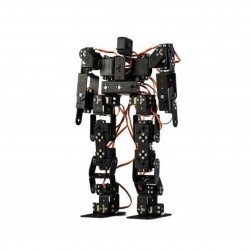
Few decades ago, robots were part of only sci-fi movies or books. The people at that time could only imagine what robots could do. In the present era, things have drastically changed. Our lives are now associated with robotics in one form or another. Multiple products you are consuming were assembled or packaged by a robot.
Did you know that Amazon uses multiple robots to efficiently arrange the products in its warehouse? This is the reason you are able to receive your products so fast. And, talking about the drones, the applications are more than video recording in a wedding or delivery of products.
What does it tell you about the job market? Yes, you guessed it right.
There are a plethora of jobs in the market for someone who’s an expert in one of the aspects of robots. This is the reason robotics is a must in Indian schools.
The demand for robotics experts is high
A global report published in 2017 mentioned that there are only three robots in India per 10,000 employees. Also, there is a huge difference between the required and available robotic experts in India. These facts tell that someone who has started to learn robotics from the school will get a job for sure. Someone who’s learning robotics also acquires programming skills. And we don’t need to tell you how much a programmer is in demand.
Math starts looking easier
Mathematics is universally the most feared subject in schools. People who design robotic kits and curricula for schools are well aware of this fact. They design activities and lesson plans by integrating math problems. The students, as a result, don’t find it subject intimidating.
Current Scenario in educational institutions
Around 15 colleges and universities in India are now offering robotics courses. Including M.E. automation and robotics and M.tech in robotics. Talking about the schools, the technology is still in its nascent stages. There are various educational institutions that offer robotics clubs to their students. Recently, a Bengaluru-based school has introduced robots as teachers. Instead of replacing the teachers, they assist them during the lectures. This makes the classes more enriching for the students.
But, these are examples of very few educational institutions in India. Implementing robotics in 15-lakh-plus educational institutions of India is still a huge challenge.
An issue with making it a mainstream thing is that the teachers, themselves, lack the skills required to use use robots or teach technology. Another issue is that the curricula isn’t available for making it easier for the students to know multiple aspects. In fact, the lectures aren’t well-designed due to lack of resources. And, it’s not feasible to establish an entire lab dedicated to robotics. Conventionally available robotic kits are quite costly.
It’s not just about technical skills
No doubt, learning robotics can teach a lot of technical skills that will be in demand. But, learning robotics is more than that. Even if a child wants to enter a profession that’s completely artistic in nature, learning robotics can still be beneficial. Confused? Let us tell you how.
When attempting to create a robotics model or operate it, the students acquire creative skills, something crucial in almost every type or occupation. Problem solving is another skill that a student acquires by regularly working on robotic kits.
Are these kits complicated?
Perhaps you might be wondering: working on these kits could be quite challenging.
Well, the good news is that numerous kits are quite simple to work on, especially those designed for the beginners. There is no need to use screws and other small parts to design a robot. A user just needs to assemble major parts like motors, bricks, and sensors to start operating a robot. The manuals provided make it simpler for the students to construct these models.




Leave a Comment